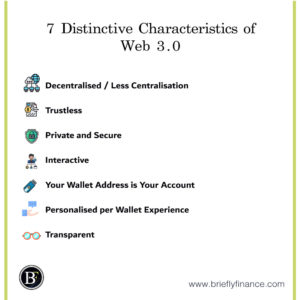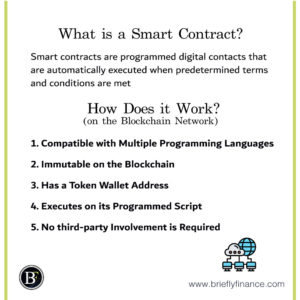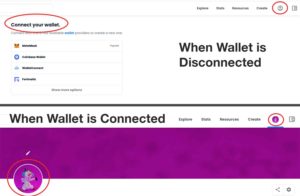Increase of consumer demand for more interactivity on the internet along with the disruption of the blockchain technology have contributed to the emergence of the web3.0.
Web 3.0 key characteristics are being decentralised, trustless, secured, programmable, and ubiquitous on the internet.
You may ask, but what is Web 3.0? Why number 3?
Let us bridge the gap between Web 1.0 to Web 3.0
- Web 1.0 refers to how the internet worked back in the 1990s to early 2000s, which was one way communication/interaction from publishers to internet users.
- Web 2.0 is ideally the social media phase, which is today. Publishers and users both communicate and interact with one another on the publisher platform leading to more transparency from two ways communication.
- Web 3.0 is internet that uses blockchain technology, this introduces security, transparency, website interaction and digital ownership.

Attribution: The icons has been designed using resources from Flaticon.com
Here is brief explanation on how Web 3.0 works.
- It is built on a blockchain which are group of computers that are powering the network from around the world.
- Blockchain host decentralised applications which are programmed with smart contracts (basically just a program saved on the blockchain) which allows the interactivity within it.
- And finally the final layer is the front-end website that interacts with the smart contract.
Decentralised / Less Centralisation
The core feature behind web 3.0 applications is decentralisation, it is basically a an application on a hosted website that gives more control to the user.
So when you are on a website and want to visit web 3.0 application you will have to connect your wallet address. Which can be described as your universal account that holds your digital assets in that certain blockchain network (e.g. Ethereum).
Interacting with the website with your wallet will automatically give you access to the application features (additional to what the website provides).
The website will check whatever digital asset you have in your wallet. Then whatever interaction you do will be executed without the interference of decisions made by the website owner.
For example, a website host will not be able to treat wallets based on the countries they are from or gender (for now). The only exclusive access they can provide is based on what the wallet holds. And everything is automated, host can’t interrupt the process easily (visitors will know if that condition was breached).
Side note:
If you have been researching this topic you may notice that majority of websites say that it is decentralised. Why am I saying its “less” centralised?
I personally believe that it is easy for the website owner to add a layer of control through requesting user to fill a signup form or KYC then control the user base who can access the web 3.0 features.
Trustless
Smart contacts’ scripts are generally fixed and immutable which means that users will exactly know what they will get from the transaction they are performing in Web 3.0.
This means that there is no need to have any trust involved between the website host and user. Once the user submits the transaction it will be automatically executed based on the script of the code.
For example, let us say a website is selling ebooks, the code will be conveniently fulfilled once the payment from buyers wallet is received by the sellers wallet otherwise it will automatically make a refund. This will make the process faster and emphasise less reliance on the payment gateway that has few days waiting period to get the refund.
If you still want to know about smart contracts check out the link to the article I wrote recently.

Attribution: The icons has been designed using resources from Flaticon.com
Private and Secure
With blockchain technology the web 3.0 provide strong data security privacy.
Being built on a peer-to-peer network which is a network of multiple computers across the world verifying transactions it is really hard to be hacked. Unlike traditional network where hacker may have to hack only one point.
When it comes to privacy, Users do not have to be tracked or disclose personal information, because everything is done through their wallet (unless asked by the website).

Source: https://opensea.io/collection/boredapeyachtclub
For example, here is the recent activity of Bored Ape Yacht Club a well-known project. We are able to see the transactions and which wallet bought them, but it is difficult to identify the real buyer even if they claimed they are someone we can’t be always sure.
In traditional websites the seller would be able to know who is the buyer through collecting information.
Interactive
Just to be clear traditional websites have Artificial Intelligence and well-developed algorithms. For example, if you open YouTube you will see how it recommends videos specific for you as a user.
With Web 3.0 technology it is just taking it to a different level of interactivity that could be instantly implemented without having the website take time to analyse or collect information about the user.
For example, a certain online website may treat a user who have a CyberKongz, differently than a user who holds World of Women.
Your Wallet Address is Your Account
When interacting with the traditional website we usually have to sign up and input our personal information.
With the web 3.0 technology it will be as simple as connecting your wallet to the website and it will automatically generate content based on what you own.
So for example, let us say you own a discount ticket token in your wallet from Samsung. Now you can use this discount not only on Samsung website but on any website possible whether it is from their agent or even a fan who want to give discount for Samsung discount card holders.
Below is another realistic example, when you visit OpenSea, you will be prompted to connect your wallet and once you do that your profile information will automatically populate on the website based on what you have in your wallet.

Source: https://opensea.io/
Personalised per Wallet Experience
Web 3.0 can provide personalised overall experience throughout the web.
Let us say it is women’s day and because the World of Women NFT is popular. Websites around the world provide discounts and unique product offers for whoever holds this NFT collection in their wallet.
This experience will probably create new form of marketing, with the shift from being able to collect users’ information to target users based on what they own in their wallet.
Transparent
Given the web 3.0 are recorded on the Blockchain, this means that everything is transparent and it’s hard to do “special treatment” for certain users without everyone knowing.
I am sure you have been in a situation where you visited a not famous e-commerce website and want to buy from. One of the challenges is to figure out if it is legit or a scam. Even when there are reviews they could be fake. But with blockchain technology you could have a look at the number of purchases that took place and the wallet that did purchase from it.
Final Thoughts
Internet is now moving towards giving control to the user more and more. In web 1.0 users were only able to read, web2 users can publish and interact, and now web 3.0 users can own and get exclusive treatment while maintaining their privacy.
Technology is moving fast which is very exciting!
Related Posts:
- Cryptocurrency for Dummies – Everything I learned About it
- What is a Smart Contract? and How Does it Work?
- What are DeFi Products and Services With Examples?
Disclaimer: Above links are affiliate links and at no additional cost to you. I may earn a commission. Know that I only recommend products, tools, services and learning resources I’ve personally used and believe are genuinely helpful and relevant. It is not because of the small commissions I make if you decide to purchase them. Most of all, I would never advocate for buying something that you can’t afford or that you’re not yet ready to implement.
